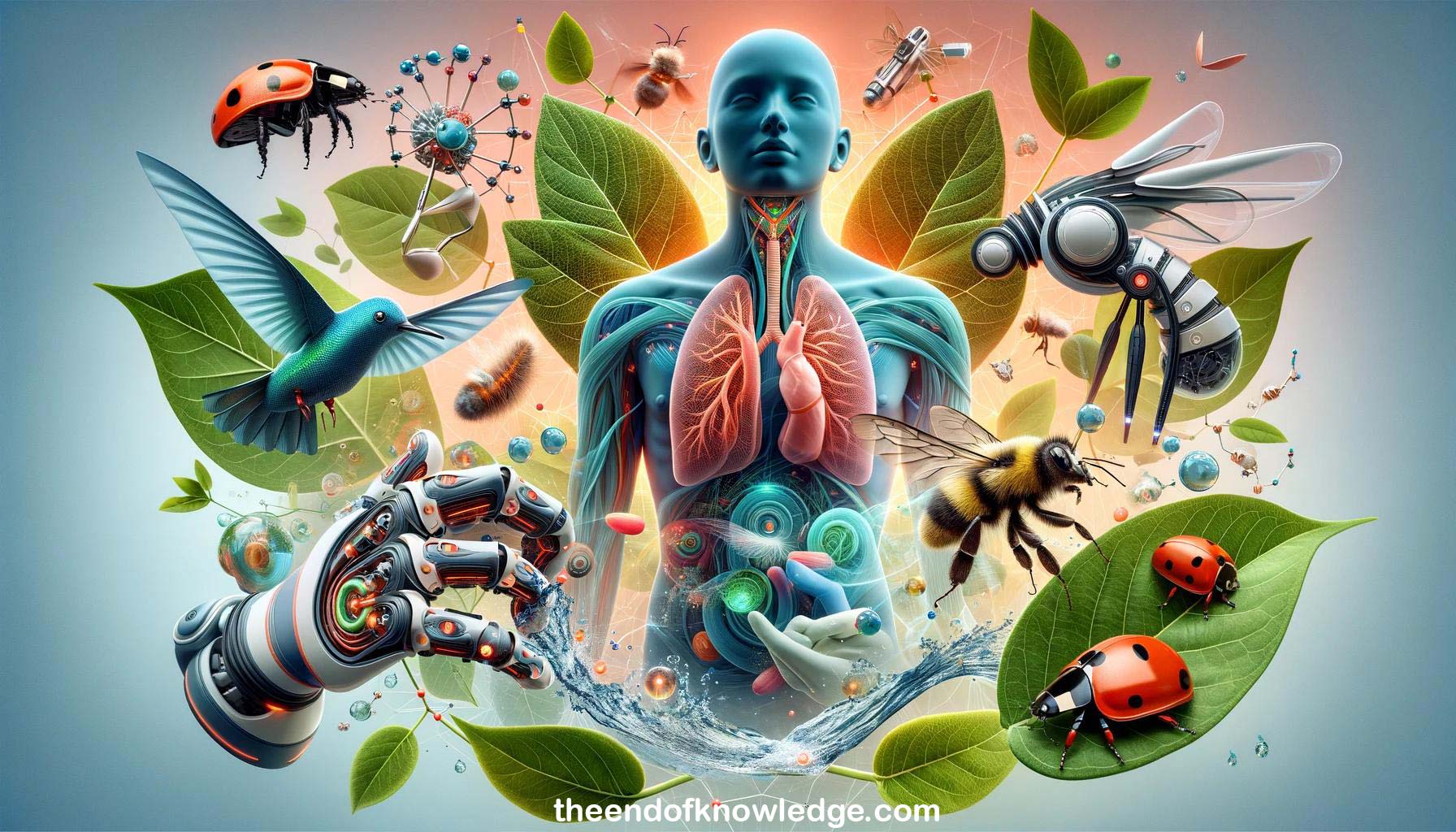 >
>
Concept Graph & Resume using Claude 3 Opus | Chat GPT4 | Gemini Adv | Llama 3:
Resume:
1.-Professor Kyu jin Cho designs soft bioinspired robots by learning from nature and extracting key principles rather than directly copying natural mechanisms.
2.-Embodied intelligence involves outsourcing computation to body morphology and material properties when designing robots, rather than relying only on internal control structures.
3.-Prof. Cho's lab built a water-jumping robot inspired by the flea's unique 'torque reversal' jumping mechanism to enable jumping on water.
4.-A ladybird beetle inspired origami-based foldable wings were developed for a jumping and gliding robot that can rapidly self-deploy and lock.
5.-Human body has over 600 muscles, 4000 tendons & 900 ligaments - still a lot to learn from to improve robots and quality of life.
6.-Met SCI patient who wanted to eat independently rather than be fed by robot, showing importance of enabling human independence.
7.-In 2010, wearable robots were rigid exoskeletons, but the human body already has a frame (bones) and just needs muscle assistance.
8.-Developed ExoGlove, a fabric-based soft robotic glove with artificial tendons routed through small conduits to mimic the human tendon pulley system.
9.-ExoGlove Poly version made with polymer for water resistance, easy cleaning, reduced motors, and passive thumb for improved wearability and hygiene.
10.-VideoNet vision-based intention detection uses arm behavior and hand-object interaction to predict grasping intent without needing biosignals.
11.-Experiments showed VideoNet learned object existence rather than specific objects, and is affected by attack angle of the hand.
12.-Fingertip force feedback is needed for gentle grasping; sensors on actuator can estimate force from tendon tension like human Golgi tendon organs.
13.-Bending Time Gradient RSTM algorithm uses recent cable sheath bending angle data to account for nonlinearities and improve force estimation.
14.-Topology optimization, typically used for rigid structures, was applied to design compliant origami finger structures with better wearability.
15.-Many in wheelchairs have respiratory weakness; cough assist is needed to expel mucus and prevent potentially fatal mucus buildup.
16.-ExoAbs belt mimics abdominal muscles to provide customized compression for cough, breathing and speech assistance in a portable device.
17.-Pre-trial showed ExoAbs could significantly improve speech volume and clarity in a stroke patient by assisting exhalation force.
18.-Combining physical embodied intelligence in robots with machine learning could enable solving important real-world problems faster and better.
19.-The human body is very complex with many health issues; soft robots enabling physical human-robot interaction are important to study.
20.-More collaboration is needed between the soft robotics and machine learning communities to advance the field and improve people's lives.
21.-Collaborating across disciplines requires mutual respect, open communication, willingness to ask basic questions, and perseverance through failures.
22.-Identifying innovative datasets that capture new types of information is key when applying machine learning to novel robotics domains.
23.-Designing bioinspired robots involves observing nature, hypothesizing key principles, finding biological matches, building prototypes, modeling, and iterative experimentation and redesign.
24.-Balance between passive soft robot dynamics and active control depends on predicting user intent to determine needed compensation forces.
25.-Machine learning errors in grasp intent prediction were reduced by relying on passive adaptation from embodied intelligence in the ExoGlove.
26.-Interpretability of machine learning models is important for robotic applications to ensure reliability and failsafe operation, given data limitations.
27.-Prof. Cho hopes the machine learning community can help accelerate the design of novel robots by learning from biological principles.
28.-Soft robots are needed for safe and natural human-robot interactions in wearable devices, assistive technologies, manufacturing, and everyday life.
29.-The soft robotics community needs more collaboration with machine learning experts to tackle the challenging problems in the field.
30.-Prof. Cho aims to inspire the machine learning community to work on interesting problems in bioinspired soft robotics to advance the field.
Knowledge Vault built byDavid Vivancos 2024